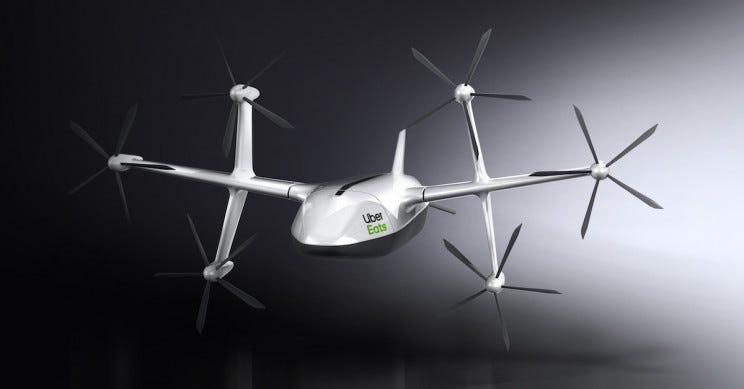This week I will look at a range of new innovations that have recently been announced. From electric planes to artificial blood, innovation continues at a rapid rate.
NASA’s first Electric Plane
NASA recently took delivery of the X-57 Mod II an all electric plane. It is an experimental aircraft that NASA will use to develop an electric plane capability and certification system. The next two stages of the project (Mod III and Mod IV) are already under development.

It is likely that this sort of aircraft will be used for short range urban flying. The plane has zero emissions in flight and provides a much quieter experience for nearby communities. It will be some time before we see electric planes in commercial use. This is an important first step in the process.
Uber Eats, Drone
Uber Eats has released the fist photos of their new drone for food delivery. At this time the drone will only be used for short deliveries from the place of the food production to a designated pickup point. From there an Uber Eats driver will deliver the meal to the customer.

The idea is to speed up the delivery by using a drone to bypass traffic and allow human drivers to do local deliveries. At some point in the future the drone will be able to deliver to our homes. The system is being trialled in San Diego.
Tyres for self driving and racing cars
Hancock have released two new concept types. The Hexonic and the Areoflow.
The Hexonic is focused on self-driving cars, so it's focused primarily on ride comfort for passengers who don't need road feedback or feel. It’s tread is broken up into a series of hexagonal modules that are able to split apart to create new channels for water. Each hexagon also has a Y shape in the middle that can push through the smooth surface to add extra grip. The Hexonic tire has seven sensors in it to read, analyze and react to the road in real time, taking things like grip, temperature and the road surface into account.

The Areoflow has a wide body with a fat slick tread that can separate in the middle to become much wider, and suck incoming air into a turbine impeller thus creating greater downforce. Aimed at high end auto racing it is not something that you will buy with your next Toyota Corolla. That said, many developments in auto racing are eventually adapted for commercial use.

Happy Dog Photos
Have you ever tried to take a photo of your dog smiling and happy? Maybe it is just our dog but in my experience dogs never cooperate and smile for the camera. Taking a great happy snap is more a matter of luck than coercion. AI can now solve this problem for you. Take a photo of your dog or cat and AI can then use a target photo (previously taken photo with the facial expression that you desire) to recreate that expression on your photo.

You can also transfer the expression of your pet onto another animal. If you have a dog that thinks he is 8 feet tall and as strong as a tiger, you can make a photo of a tiger with the same expression as your dog. This may not have much more than novelty value for most of us but for movie producers the ability to simply manipulate animal’s expressions will make for much cheaper movie making.
Curtain Bot
In the late afternoon, when the sun shines through and spoils your TV viewing, most of us are just too comfortable laying on the couch to get up and close the curtains. You could install an automatic curtain that closes at the press of a button. However these systems are prone to breakdown and are very expensive. The solution? Buy a Curtain Bot.

Curtain Bot is a automated curtain closer that can be operated from an app on your phone. The bot can open and close curtains at the touch of a button. The bot runs along the curtain rod to the left or right as required. No more getting up off the couch to deal with pesky curtains. Automation is slowly taking all the tedious tasks out of our lives.
Artificial Blood
A team at Japan’s National Defense Medical College have created artificial blood that could be used in any patient, regardless of their blood type. The blood could be used to treat patients when there is no time to confirm blood type or where there is a shortage of a particular blood type. This is particularly important in remote areas where it takes time to transfer patients to a hospital.
The blood consists of platelets and red blood cells that can be safely stored at room temperature for more than a year. Platelets ensure that the blood can clot and heal over time, while red blood cells ensure that oxygen reaches vital organs.
The blood has been tested on rabbits and will move to human trials in the near future.
Paying it Forward
If you have a start-up or know of a start-up that has a product, ready for market please let me know. I would be happy to have a look and give the start-up a shout out to my readers if it is something that I think they could use. If you have any questions or comments please email me via my website craigcarlyon.com
I would also appreciate it if you could forward this newsletter to anyone that you think might be interested.
Till next week.


